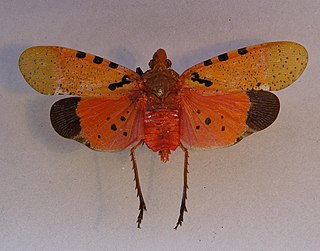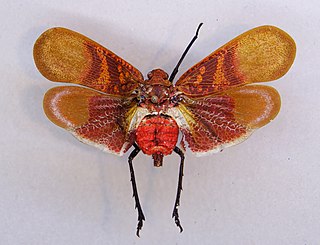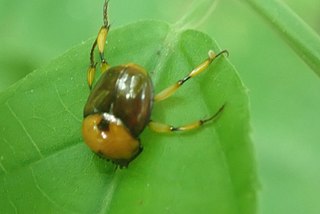
Friedrich Hermann Loew was a German entomologist who specialised in the study of Diptera, an order of insects including flies, mosquitoes, gnats and midges. He described many world species and was the first specialist to work on the Diptera of the United States.
The Entomological Society of Stettin or Stettin Entomological Society, based in Stettin (Szczecin), was one of the leading entomological societies of the 19th century. Most German entomologists were members, as were many from England, Sweden, Italy, France, and Spain. The society had very large collections and a very comprehensive library.
Karl Borromaeus Maria Josef Heller, was an Austrian entomologist who specialised in Coleoptera. He was a Professor and Section leader in the Staatliches Museum für Tierkunde Dresden where his collection is maintained. Heller was a taxonomist. He described many new species of world fauna. He was a Member of the Stettin Entomological Society.
Julius Moser was a German entomologist who specialised in beetles.

Acanalonia is a genus of planthopper and contains the majority of the species within the family Acanaloniidae. Species have been recorded from southern Europe and the Americas.
Carl Heinrich Hopffer (1810–1876) was a German entomologist who specialised in Lepidoptera.

Flatidae are a family of fulgoroid planthoppers. They are cosmopolitan in distribution and are distinguished from others in the superfamily by a combination of characters. Like all other planthoppers, they suck phloem sap of plants. Some species are known to communicate with vibrations through the plant stems. Communication may be with mates, or with ants that tend the nymphs, protecting them and gathering honeydew secretions. Adults of some species have brightly coloured forewings which are tougher and known as tegmina unlike the membranous hindwings which are used for flight. Although a few can be identified by their coloration, most species requires dissection and examination under a microscope with access to literature on already described species.
Oryxa is a genus of planthoppers in the hemipteran family Flatidae. They live on the islands of Borneo and Sumatra, and in Malaysia.
Pseudatemelia filiella is a moth of the family Oecophoridae. It was described by Staudinger in 1859. It is found in France, Spain and Portugal.

Amerila lupia is a moth of the subfamily Arctiinae. It was described by Herbert Druce in 1887. It is found in Kenya, Mozambique, South Africa, Tanzania, Zambia and Zimbabwe.
Amerila phaedra is a moth of the subfamily Arctiinae. It was described by Weymer in 1892. It is found in Kenya, Mozambique, Tanzania and Zimbabwe.

Bythopsyrna is a genus of Asian planthoppers belonging to the family Flatidae.
Adolph Speyer was a German entomologist who specialised in Lepidoptera, especially Hesperiidae.

Adolph Schenck was a German entomologist and teacher.

Belbina is a genus of planthoppers in the subfamily Enchophorinae (Fulgoridae): erected by Carl Stål in 1863; There are some 12 species presently known, occurring in eastern Africa and Madagascar.

Scamandra is a genus of planthoppers in the subfamily Aphaeninae (Fulgoridae): found in Malesia.
Datua is a genus of planthoppers containing the single species Datua bisinuata and placed in the tribe Pyropsini. The species is found in Borneo and Sumatra.

Canthon angustatus is a species of tumblebug from the genus Canthon. It occurs across North, Central, and South America, from Mexico to Peru. The species was originally described by Edgar von Harold in 1867

Lycorma imperialis is a planthopper indigenous to parts of China and Indo-Malaysia. L. imperialis was originally discovered in 1846 by Adam White and has one recognized non-nominate subspecies, L. i. punicea. L. imperialis has undergone a number of reclassifications since its discovery and is one of four species in the genus Lycorma. L. imperialis follows a hemimetabolous life cycle and will undergo a series of nymphal stages (instars) before maturing to an adult.
Limois is a genus of Asian bugs in the subfamily Aphaeninae and tribe Limoisini, erected by Carl Stål in 1863. Species have been recorded from: West Himalayas, Bangladesh, China, Korea, Russia, Myanmar and Vietnam.










